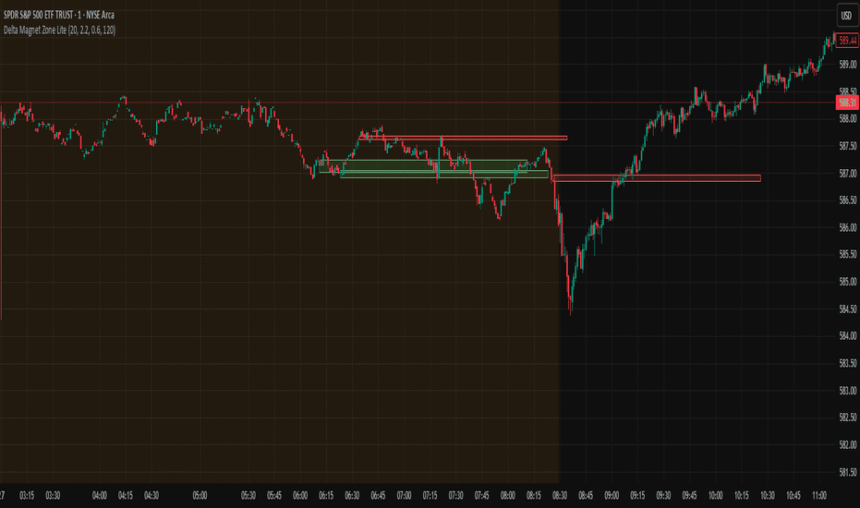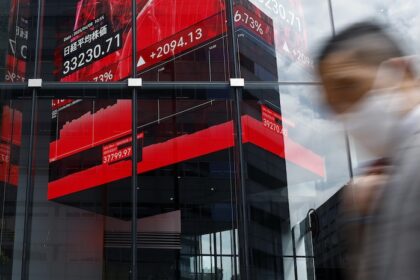Investors Turn to Amazon and Low-Volatility ETFs Amid Market Uncertainty
As economic volatility continues to rattle global markets, investors are recalibrating their strategies by shifting toward dependable tech giants and low-risk investment vehicles. Amazon, a perennial favorite among growth-focused portfolios, is emerging as a safe haven once again. Simultaneously, interest in low-volatility exchange-traded funds (ETFs) is surging, as traders and long-term investors alike seek shelter from macroeconomic headwinds.
The current investment climate is defined by one prevailing sentiment: uncertainty. From geopolitical instability and inflationary pressures to fluctuating interest rates and fears of an economic slowdown, the once-optimistic momentum that defined the early phases of the AI-driven rally in 2023 has given way to cautious positioning. And while the S&P 500 has remained resilient, the internal dynamics of the market suggest a notable shift in risk appetite.
Amazon: A Recession-Resilient Giant Regains Popularity
Once viewed primarily as a growth stock, Amazon is now proving its worth as a hybrid investment: one that offers both long-term upside and a buffer against market instability. The company’s performance across multiple verticals—cloud computing, e-commerce, advertising, logistics, and media—positions it as a cornerstone for many portfolios aiming for durability in turbulent times.
Amazon Web Services (AWS), in particular, remains a pillar of strength. Even as enterprise cloud spending normalizes after the pandemic-induced surge, AWS continues to post strong margins and steady revenue growth. For many investors, AWS serves as a stabilizing force that counterbalances cyclical pressures on Amazon’s retail division.
At the same time, Amazon’s aggressive cost-cutting measures over the past year—ranging from workforce reductions to operational streamlining—have improved its profit profile. The company’s renewed focus on efficiency, combined with AI-driven initiatives and expanding advertising revenues, is attracting institutional and retail investors seeking dependable mega-cap exposure.
“Amazon has transformed into a cash-generating juggernaut,” says Laura Bernard, portfolio strategist at Eastgate Capital. “It’s no longer just a growth story; it’s an operationally lean, multi-faceted enterprise that thrives across different economic cycles.”
This repositioning is evident in the recent flow of capital into Amazon stock. According to data from ETF Trends and FactSet, Amazon was among the top 10 most purchased stocks by hedge funds and retail investors in Q2 2025. Its weighting in major indices, including the Nasdaq-100 and S&P 500, has also increased in line with its rising market capitalization.
The Allure of Low-Volatility ETFs
Alongside the Amazon rally, low-volatility ETFs are seeing a resurgence of interest. Funds like the Invesco S&P 500 Low Volatility ETF (SPLV) and the iShares MSCI USA Min Vol Factor ETF (USMV) have experienced increased inflows as investors seek to reduce downside risk without fully exiting the market.
These funds are designed to track stocks with historically lower volatility, making them attractive in environments characterized by sharp rate moves, geopolitical surprises, and inconsistent earnings data. While they may underperform during bull runs, they provide steadier returns and often outperform during corrections or sideways markets.
“Low-volatility ETFs are like a seatbelt for your portfolio,” explains Daniel Cho, a senior market analyst at Kinetic Holdings. “They won’t thrill you with explosive returns, but they will help you stay on course when the road gets bumpy.”
Recent data from Morningstar shows that assets in low-volatility ETFs grew by 12% over the past quarter, signaling rising demand from institutional investors seeking downside protection. These ETFs have also proven popular among older investors and retirement-focused accounts, where capital preservation is paramount.
Moreover, low-volatility strategies are increasingly being integrated with factor-based approaches, such as quality and dividend strength, to provide a more well-rounded, risk-managed equity exposure.
Economic Anxiety and Central Bank Signals
Much of the caution driving these investment choices stems from the fog surrounding global economic policy. The U.S. Federal Reserve’s stance on interest rates remains ambiguous, with inflation metrics providing mixed signals. While some data points suggest disinflationary progress, others point to persistent cost pressures in services and housing.
In Europe, the European Central Bank is navigating its own balancing act, contending with inflation while facing stagnating growth. Meanwhile, geopolitical flashpoints—including ongoing conflicts in Eastern Europe and the Middle East, as well as trade tensions between the U.S. and China—add an unpredictable dimension to global supply chains and market psychology.
For investors, these overlapping risks are difficult to price in. As a result, capital is gravitating toward equities with proven resilience and instruments that provide a smoother ride. The shift away from speculative assets and into quality and stability is becoming a dominant theme.
The Retail Investor’s Dilemma
Retail investors, many of whom entered the market during the COVID-19 era boom, are facing a more sobering environment. The thrill of meme stocks and high-flying IPOs has largely faded. In its place, a new pragmatism is taking hold—one that favors companies with strong balance sheets, dependable cash flows, and long-term strategic vision.
Financial platforms like Robinhood and Fidelity have reported increased activity in ETFs and blue-chip stocks, suggesting that everyday investors are following institutional cues. Many are also diversifying through fractional share purchases of Amazon, Microsoft, and other mega-caps to build defensible core holdings.
At the same time, education around portfolio risk is gaining traction. Retail-focused newsletters, podcasts, and financial influencers are increasingly emphasizing diversification and long-term thinking—steering new investors away from volatility-chasing toward more conservative strategies like low-volatility ETFs and dollar-cost averaging.
What Lies Ahead?
As the second half of 2025 unfolds, much remains uncertain. Will inflation resurge or finally relent? Will central banks pivot toward easing or continue to hold rates steady? Can geopolitical tensions be contained, or will they spill over into further economic disruption?
In this climate, the market’s recent preference for Amazon and low-volatility ETFs reflects more than just trend-following—it represents a return to fundamentals. Investors are prioritizing stability over speculation, quality over hype, and long-term resilience over short-term gains.
The broader takeaway is clear: in times of uncertainty, smart capital seeks shelter not in retreat, but in disciplined, strategic realignment. Whether through household names like Amazon or through low-volatility ETFs that reduce market noise, the new investment playbook is focused on adaptability, sustainability, and risk-managed growth.
Conclusion
As markets adjust to a world that no longer offers easy wins, the pivot toward Amazon and low-volatility ETFs is a telling sign of investor psychology. It’s not about abandoning the market—but about navigating it more thoughtfully. In an era where uncertainty reigns, the ability to stay the course without undue risk may prove to be the greatest asset of all.










